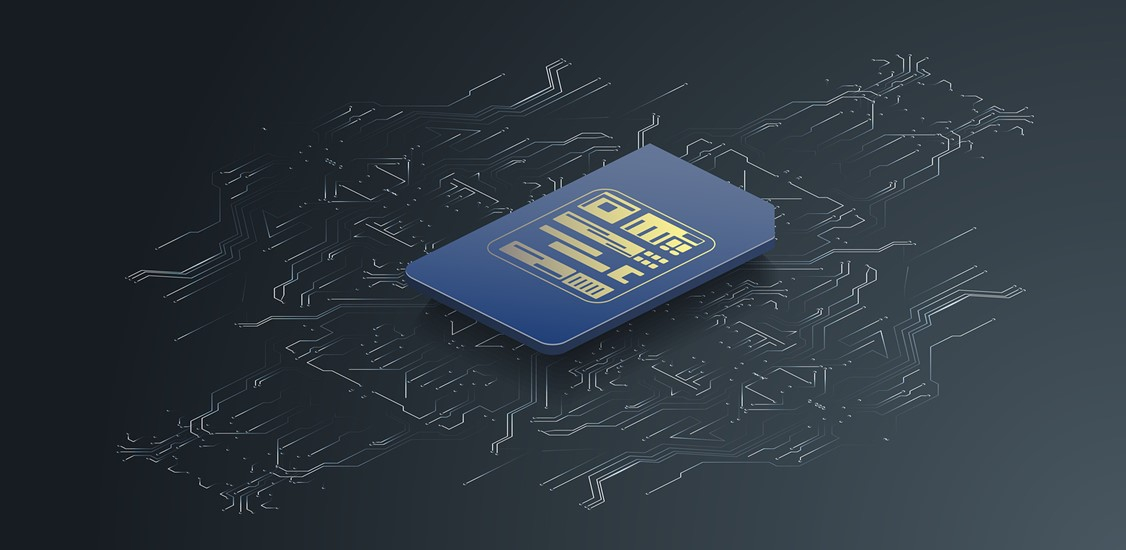Of the many decisions required when embarking on an IoT deployment, a key one pertains to connectivity. Representing 5-10% of the value of IoT solutions, secure and reliable connectivity and data transfer is critical to the IoT ecosystem. If connectivity fails or is compromised, IoT applications fail.
Many deployments choose cellular technology as the backbone of their connectivity. It’s reliable, cost effective and able to support massive numbers of devices. Cellular connectivity also provides a high level of built-in security. An especially nice perk is that IoT deployments can leverage the hundreds of existing mobile networks that deliver cellular signals to 97% of the entire world’s population.
Connecting to cellular networks requires the IoT device to incorporate a subscriber identity module (SIM) card - technology that stores information required to identify and authenticate that specific device on a network. For many years, the only option was a traditional SIM card, which was used merely as an authentication method. Today, with additional network functionality like roaming, eSIM offerings and, in time, iSIM technology - users have more and sometimes better choices when it comes to IoT deployments.
The original IoT SIM
It’s important to remember that IoT cellular connectivity SIM cards have some differences from consumer SIM cards used to enable voice calls in smartphones. Services enabled by IoT SIMs, for example, can incorporate special tariff and flexible contract plans, deliver the ability to customize data volumes and use multiple networks, and transmit data to the cloud for access via web-based interfaces. Traditional plastic IoT SIMs also can be ruggedized to accommodate harsh environments, including extreme temperatures and elevated vibrations.
This version of the SIM does come with downsides, including lack of flexibility, increased costs and security risks. Traditional IoT SIMs sometimes restrict users to a single country or region covered by the specific network provider associated with the SIM. If an IoT deployment footprint covers a wider geographic area, the complexity and increased costs of managing connectivity can be significant. These cards also can lock users into a specific carrier and network technology. A device user who wants to change carriers or upgrade to a faster cellular technology will have to purchase and install a new SIM - a costly undertaking that may negate the savings from a more favorable data plan or faster data transmission speed. Finally, traditional SIM cards are removable, making them more likely to be lost or stolen.
Despite these shortcomings, traditional SIMs are still a good option for straightforward IoT deployments, such as when a project is confined to a single region. And because this SIM is changeable and easy to access in small devices, it can be appropriate for shorter deployments.
eSIM: digitizing connectivity
The embedded SIM - or eSIM - is quickly establishing itself as the go-to SIM for many IoT deployments. Shipments of eSIM-based devices of all types are estimated to reach almost two billion units by 2025, up from 364 million in 2018, according to a Counterpoint Research report.
The primary difference between a traditional SIM and an eSIM is the eSIM’s capacity for remote profile management, which does away with the technical and carrier lock-ins that come with traditional SIM cards. Eliminating the need to physically switch out a SIM card when switching to a different carrier network or a different cellular technology (e.g., 2G, 3G, LTE) significantly reduces the complexities of getting IoT devices connected - especially for global deployments where the use of traditional SIMs would require procuring, installing and managing various SIM card SKUs for each of the regions in which they are used.
The advantages are clear:
IoT devices deployed over a long period of time are future-proofed from the impact of evolving network technologies, sunsets or service terminations.
- Organizations have the option to choose from and easily provision to a broader range of cellular networks - including the most economical one available - without having to purchase and physically replace SIM cards. Costs are reduced, the logistical management of the cards is simplified and the return on IoT investments is maximized.
- Security is improved. Some eSIMs are permanently embedded into the device, making it difficult for them to be lost or stolen.
Some might dismiss the eSIM option because of slightly higher upfront costs than traditional SIMs. In the long run, however, a “no touch” connectivity eSIM tends to be a more economical option when you consider the savings that accrue. The savings come from eliminating the cost and time required to buy, install and manage multiple SIMs for a single device as well as from minimizing the cost of optimizing profiles and connectivity options during a device’s lifetime.
iSIM: the next frontier
The most recent SIM advancement - the Integrated SIM (iSIM) - is poised to cause a significant disruption in the IoT marketplace. Here’s why: iSIM technology moves eUICC functionality onto a device’s permanent hardware. Its minuscule size practically eradicates the SIM’s footprint, making the iSIM an especially excellent solution for smaller IoT devices such as wearables and shrinking medical hardware. And like eSIM, iSIM allows a connected device to go anywhere in the world and remotely provision to an IoT network.
iSIM offers other benefits as well:
- Lower cost/higher reliability: The integration of iSIM connectivity directly into the chipset means few components, making the iSIM less costly and more reliable. If an organization is buying thousands of IoT devices, the savings quickly add up.
- Longer life: The minimal power consumption of system-on-a-chip (SOC) architecture can expand the lifetime of a device.
- Better security: iSIM is not a separate piece of hardware, so the opportunity to alter, steal or replace it is effectively eliminated.
One key sticking point has impacted the wider adoption of iSIM: It’s a new technology. This means, for example, that interoperability specifications are still being developed by the GSMA. iSIM also changes roles in the ecosystem by imposing new security requirements on vendors. Once these technicalities are solved, iSIM use should see a fast acceleration.
The bottom line on cellular connectivity
Enterprises using IoT devices that rely on cellular connectivity are in a good position today because they no longer are confined to using a SIM that has restricts them to a single carrier or region. Having more options - traditional SIMs, eSIMs and iSIMs - allows the selection of a connectivity strategy that makes sense and is designed to meet the specific needs of an IoT deployment, whether it is confined to a small geographic footprint or requires devices to move across the globe.




















